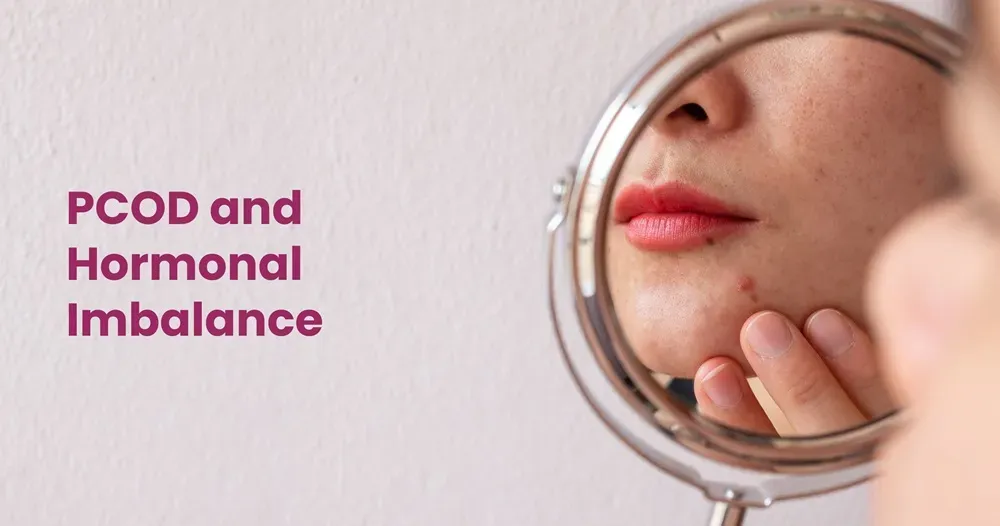Exploring Diagnostic Tests for Hair fall: Understanding the Root Cause of the Problem
Jul 03, 2023

Hair fall is now not restricted to senior citizens and has become a major concern for growing adults as well. A wide range of factors causes hair loss, including genetic history, hormonal imbalances, nutritional deficiencies, stress, and more.
Diagnostic tests play a key role in determining the root cause of hair fall, enabling targeted treatments and personalised solutions. In this blog, we will discuss various diagnostic tests used to evaluate hair fall and gain insights into how they aid in understanding the problem.
Types of Hair Fall Diagnostic Tests
Blood Tests and examinations
Blood tests are frequently used to diagnose hair loss. They aid in the identification of any nutritional deficiencies or hormonal imbalances that may be contributing to hair loss.
The most common blood tests are:
1. Complete Blood Count (CBC): This test measures red blood cells, white blood cells, and platelets. It aids in determining whether there are any underlying disorders, such as anaemia, that may be causing hair loss.
2. Iron and Ferritin Levels: Hair loss can be caused by low iron levels. Iron and ferritin levels are measured to determine iron deficiency, which can be treated with dietary adjustments or supplement intake.
3. Thyroid Function Tests: Thyroid hormone imbalances such as hypothyroidism or hyperthyroidism can cause hair loss and the imbalance can be diagnosed with Thyroid Function Tests.
Tests.
Hair Pull Test
Hair Pull Test is ideal way to know the amount of hairfall through pulling hair gently from different areas of scalp. It helps experts analyse the extent of hair loss.
Scalp test
A comprehensive examination of the scalp and hair might reveal important information about hair fall. Dermatologists frequently undertake a scalp examination, which involves physically evaluating the scalp for symptoms of inflammation, infections, or disorders such as dandruff or psoriasis.
Trichoscopy
Trichoscopy is performed by removing hair strands from the scalp and studying them under a microscope. It assesses the ratio of hair in distinct growth phases and offers data on hair growth, shedding, and the entire hair cycle. Trichograms provide crucial information on the health of hair follicles and the causes of hair loss.
Biopsy of the Scalp
A scalp biopsy may be advised in certain cases where the reason for hair loss is unknown. A small sample of scalp tissue is removed and inspected under a microscope during this operation. Scalp biopsies can aid in the diagnosis of disorders such as alopecia areata, androgenetic alopecia, and scarring alopecia, as well as provide important information for treatment options.
How to prevent hair fall?
Intake balanced diet: Ensure that you consume a nutritious diet rich in vitamins, minerals, and proteins.
Keep your scalp clean: Regularly wash your hair with a mild shampoo to keep your scalp clean and prevent the build up of dirt and excess oil.
Avoid excessive heat and styling: Limit the use of heat styling tools such as straighteners, curling irons, and blow dryers, as they can damage your hair and make it prone to breakage.
Conclusion
Diagnostic tests are critical in determining the underlying cause of hair fall. Healthcare experts can acquire significant insights into the reasons contributing to hair loss by doing blood tests, scalp analysis, hair pull tests, hair microscopy, trichoscopy, and scalp biopsies.
We, at Apollo Diagnostics, have been well-versed in conducting health checkups and delivering accurate reports for over 34 years.
Keep a check on your hair fall and reach out to us to get the diagnostic tests done.
Related Blog Post
Blog Categories
- Child Health
- Mens Health
- Women's Health
- Mental Health
- Health Myths & Facts
- Fitness
- Nutrition/Recipes
- Remedies
- Weight Management
- Stress Management
- Health Supplements
- Addiction Management
- Disease Management
- Allergy
- Anemia
- Arthritis
- Asthma
- Autoimmune Diseases
- Blood Pressure
- Cancer
- Deficiencies
- Dengue/Malaria/Chikungunya
- Diabetes
- Eye Problems
- Heart Diseases
- Hepatitis
- HIV/AIDS/STD
- Hormonal Imbalance
- Infection/Flu/Viral
- Kidney
- Liver
- Menstrual Problems
- Pregnancy
- Skin & Hair Problems
- Stomach Ailments
- Thyroid
- Others
- Health Checkups
- Diagnostics/Pathology
- Lifestyle & Wellness
- Covid
- Medical Tests
- Cholesterol
- Health Tips
- Parent Care/Old Age
- Lungs
- Food Intolerance








